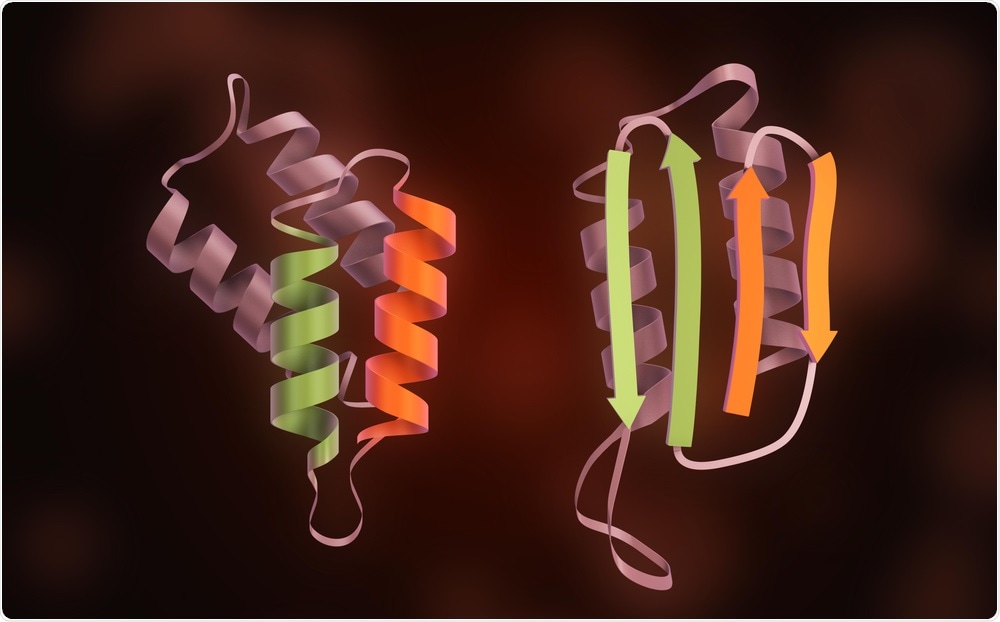A new study achieved the highest-ever resolution imaging of an infectious prion, offering the first-ever atomic-level data of how these abnormal proteins assemble and lead to fatal neurodegenerative diseases in people and animals, as well as potential ways they can be targeted by new therapies.

Prion. Image Credit: Oscar Collica/Shutterstock.com
The study was performed by Case Western Reserve University and the National Institutes of Health (NIH) and has been published in the Molecular Cell journal.
These detailed prion structures provide a new premise for understanding and targeting these currently untreatable diseases. It will now be much easier to develop and test hypotheses about how prions are assembled as highly infectious and deadly protein structures.”
Allison Kraus, Study Lead and Co-Corresponding Author and Assistant Professor, Department of Pathology, School of Medicine, Case Western Reserve University
Analyzing the fundamental building blocks of these toxic proteins, Kraus offers a foundation for therapeutic approaches to inhibit the buildup, spread, and toxicity of prions.
Prions are proteins found in brain tissue that convey their irregular “misfolded” shapes onto the regular version of the same protein—and are the source of mammalian diseases, such as human conditions like Creutzfeldt–Jakob disease (CJD) and its variant, called vCJD, as well as Gerstmann–Sträussler–Scheinker syndrome, and others.
Prion-like mechanisms similar to these are found in the characteristic proteins suspected to cause neurodegenerative conditions, such as Parkinson’s disease, Lou Gehrig’s disease (also known as ALS, or amyotrophic lateral sclerosis), chronic traumatic encephalopathy (CTE), and Alzheimer’s disease.
The occurrences of prion diseases are rare, but they can be transmitted between people. Moreover, other forms such as chronic wasting disease are readily transmissible between animals.
As part of this research, the team imaged rodent-adapted scrapie prions extracted from the brains of clinically ill hamsters.
New level of resolution
The researchers used cryogenic-electron microscopy (cryo-EM)—at both NIH and the Cleveland Center for Structural and Membrane Biology Cryo-Electron Microscopy Core facilities at Case Western Reserve—together with a collaborative pipeline between the Kraus (CWRU), Byron Caughey (NIH), and Research Technologies Branch (NIH) groups and thus determined the fundamental building blocks of these proteins, such as the placements of their amino acids.
Through cryo-electron technology, the prions were suspended in ice, enabling the researchers to capture thousands of images of the protein assemblies to create 3D atomic-resolution models with the help of proprietary software.
This first-ever imaging to successfully unravel the atomic-level detail of a brain-derived prion paves the way for similar “solving of other prion structures,” added Kraus. The researchers also captured lower resolution images of another unique prion strain that showed structural differences between the two strains.
It’s thought that there are many variations in prion structures as they relate to different diseases. Higher-resolution images provide clarity to many aspects of the cause and progression of these infectious diseases that are uniquely caused in nature by proteins—not viruses or bacteria.”
Allison Kraus, Study Lead and Co-Corresponding Author and Assistant Professor, Department of Pathology, School of Medicine, Case Western Reserve University